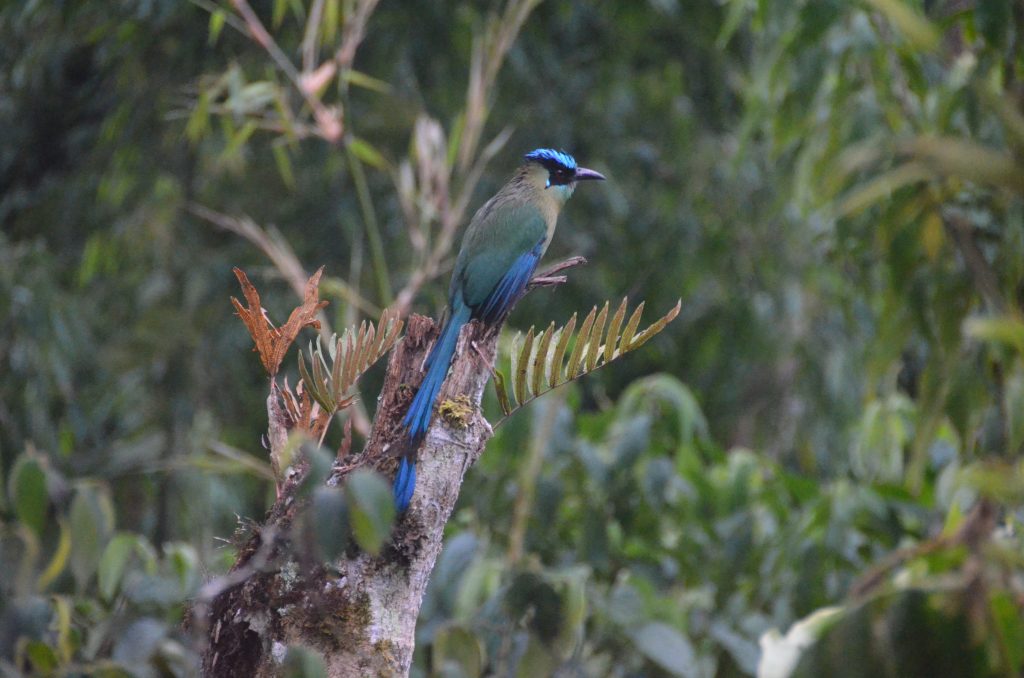
This story about the 20th anniversary meeting of a pioneering tropical research coalition came about for two reasons: 1) my first grandchild, Simon Catanoso, made his entrance into the world more an a week before his due date, thus opening the way for me to head to Peru, and 2) the 10th anniversary of the Andes Biodiversity and Ecosystem Research Group (ABERG) was the start of a new journalistic career path for me — climate change and climate policy — that ultimately led me to Mongabay.
A Spanish language version of the story, published on Mongabay LATAM, is here.
Since my first trip to Peru in 2013 at the insistence of my Wake Forest University colleague and collaborator Miles Silman, a top tropical ecologist and co-founder of ABERG, I’ve returned nearly a dozen times. Once to cover COP20 in 2014, the UN climate summit that set the stage for the 2015 Paris Agreement, which I covered for Mongabay, with funding support from the The Andrew Sabin Family Center for Environment and Sustainability at Wake Forest. Later, I returned multiple times as a communications consultant from Wake Forest for an influential NGO, CINCIA in Puerto Maldonado, founded in part by Miles with grants from USAID and World Wildlife Fund. In 2018, Miles and I developed a four-week summer program in tropical ecology and science writing and have brought four groups of Wake Forest students to the Amazon since then. Wake Forest featured our program online and in print.
Along the way, I’ve climbed a learning curve in climate science, forest and ecosystem mechanics, and biodiversity necessity that has enabled a late-career pivot to environmental journalism, mostly for Mongabay, that I simply could not have imagined when I left newspaper journalism in 2011. I am beyond grateful to Miles and host of environmental scientists, NGOs and forest campaigners over the past decade for assisting me in my immersion into covering parts of the most important story on earth, bar none — the existential threat to human life on earth wrought by human-induced climate change.
At ABERG10, held in the Andean village of Pisac, not from from Cuzco, I knew so little I was reluctant to interview the top tropical ecologists from around the world who gathered for that meeting, even though I was the only journalist there. Still, my coverage of ABERG10 was published in National Geograpic Online, as well as radio stories in WUNC and WFDD in North Carolina.
Ten years later, at ABERG20, many of those same scientists have become trusted sources, the issues they discussed and findings they presented are now familiar, and the context of complexity in their data gathering is something I’ve witnessed myself many times. The lead investigators and graduate students who make up ABERG are contributing to one of the most unique and vital longitudinal research projects in the global tropics across a range of topics.
My goal with the story here was to capture the essence of ABERG, its amazing transect, and its overlapping studies while highlighting a few of the scientists whose devotion to understanding the impact of warming temperatures on a warm and globally vital ecosystem remains strong and growing stronger.
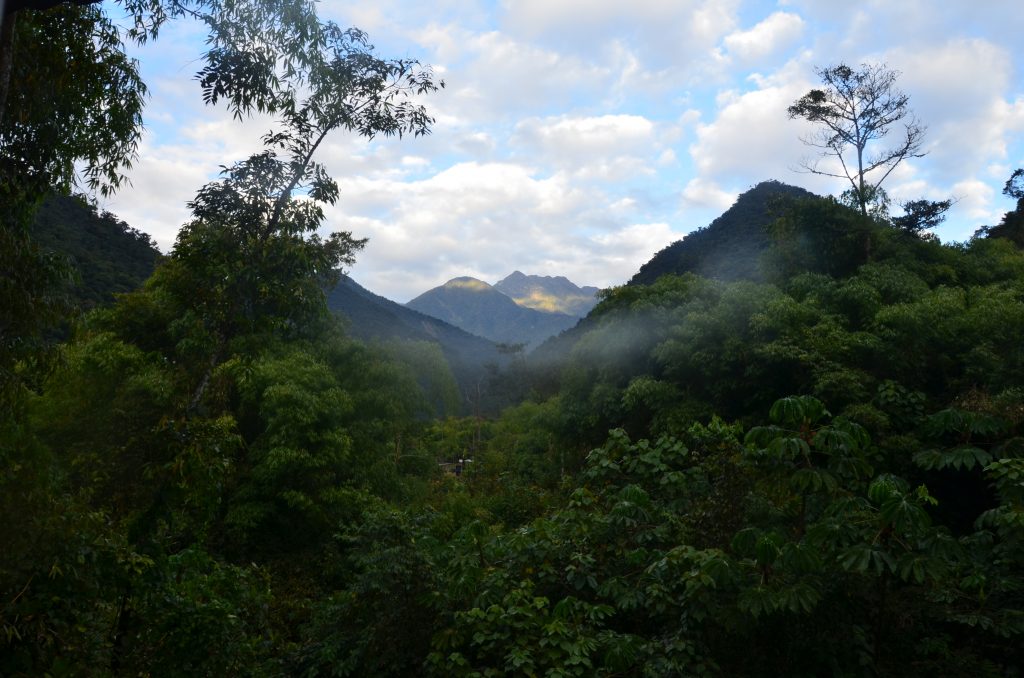
ABERG’s study field for more than 20 years, off in the distance. My photo from 2013.
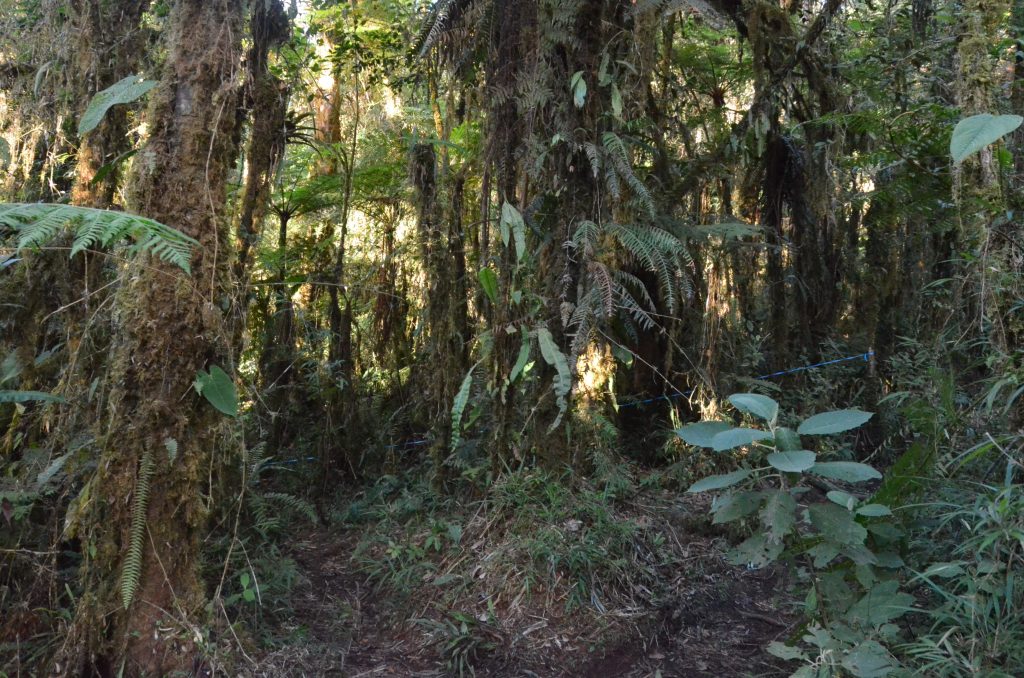
In my story, I describe the unique transect that Miles planned and oversaw the installation of starting in 2003 — more than 20 1-hectare plots on a single slope of the Andes stretching down from 12,000 feet to lowlands near sea level. This 2013 photo of mine accurately captures the ruggedness of each plot. What you can’t see is just how difficult these plots are to access, located as they are on a single, rough trail carved by Incans more than 500 years ago and used only by scientists and cocoa smugglers.
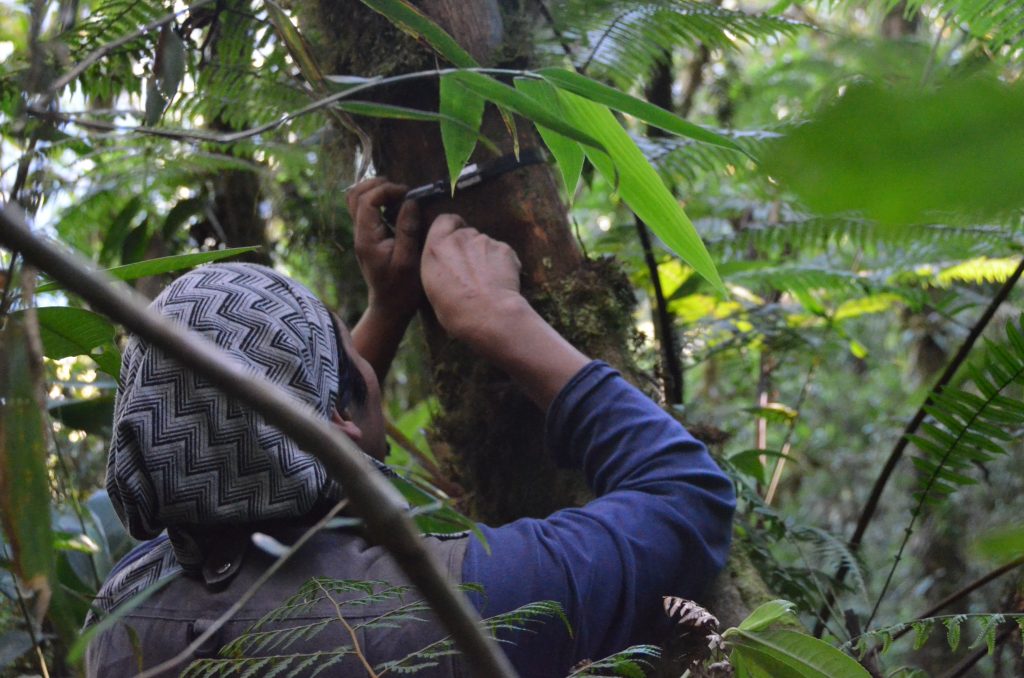
What the meticulous work of evaluating the impact of climate change on 1255 tree species along the transect looks like. My photo from 2013.
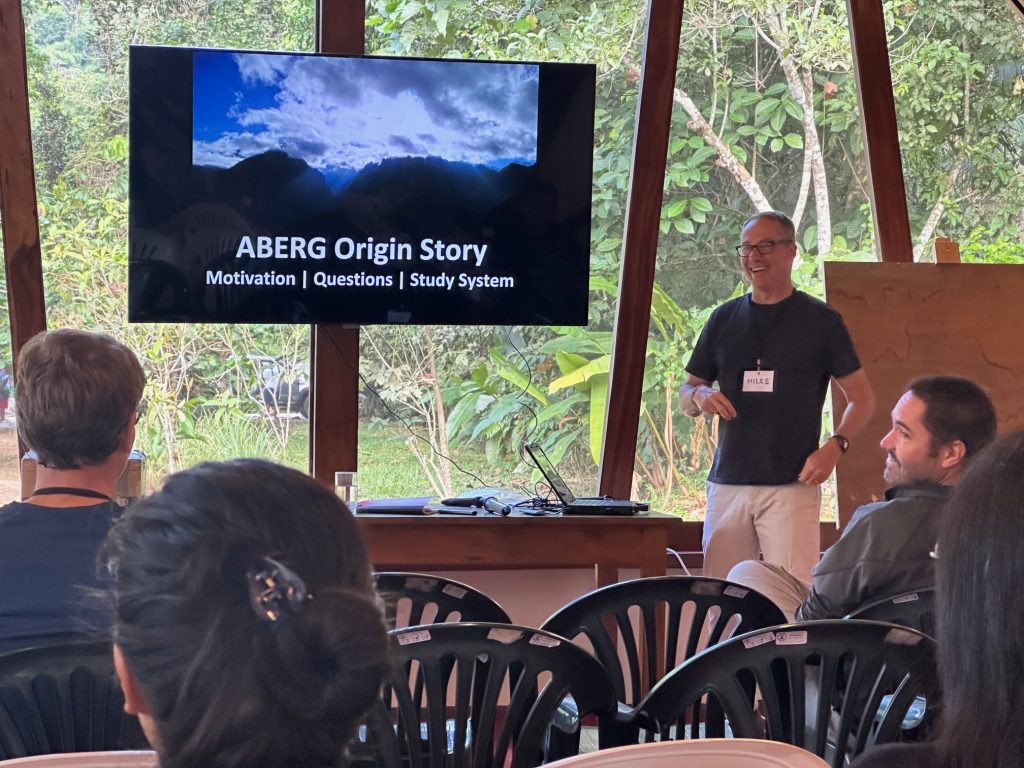
Miles Silman, ABERG co-founder and architect of the elevational gradient/transect, organized ABERG20 and opened the conference with a brief history of the group’s origins and aspirations. My photo from June 2023.

